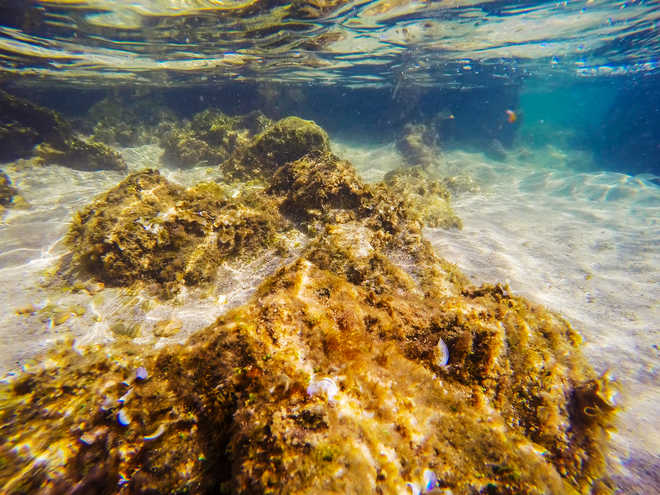
Photo source: Thinkstock
New York
Iron-bearing rocks that formed at the ocean floor 3.2 billion years ago carry unmistakable evidence of oxygen, much earlier than previous discoveries reported, a new research has found.
The only logical source for that oxygen could be photosynthesis by living organisms, the researchers said.
Until recently, the conventional wisdom in geology held that oxygen was rare until the "great oxygenation event" 2.4 to 2.2 billion years ago.
"Rock from 3.4 billion years ago showed that the ocean contained basically no free oxygen," said Clark Johnson, professor of geoscience at University of Wisconsin-Madison and one of the researchers.
"The rocks we studied are 3.23 billion years old, and quite well preserved, and we believe they show definite signs for oxygen in the oceans much earlier than previous discoveries," Johnson noted.
The most reasonable candidate for liberating the oxygen found in the iron oxide is cyanobacteria, primitive photosynthetic organisms that lived in the ancient ocean, the researchers said.
The rocks under study, called jasper, made of iron oxide and quartz, show regular striations caused by composition changes in the sediment that formed them.
To detect oxygen, the scientists measured iron isotopes with a sophisticated mass spectrometre.
"Cyanobacteria could live in shallow water, doing photosynthesis, generating oxygen, but oxygen was not necessarily in the atmosphere or the deep ocean," said study co-author Brian Beard, senior scientist at University of Wisconsin-Madison.
However, photosynthesis was a nifty trick, and sooner or later it started to spread, Johnson pointed out.
"Once life gets oxygenic photosynthesis, the sky is the limit. There is no reason to expect that it would not go everywhere," Johnson noted.
The study, funded by NASA, was published in the journal Earth and Planetary Science Letters. — IANS


























